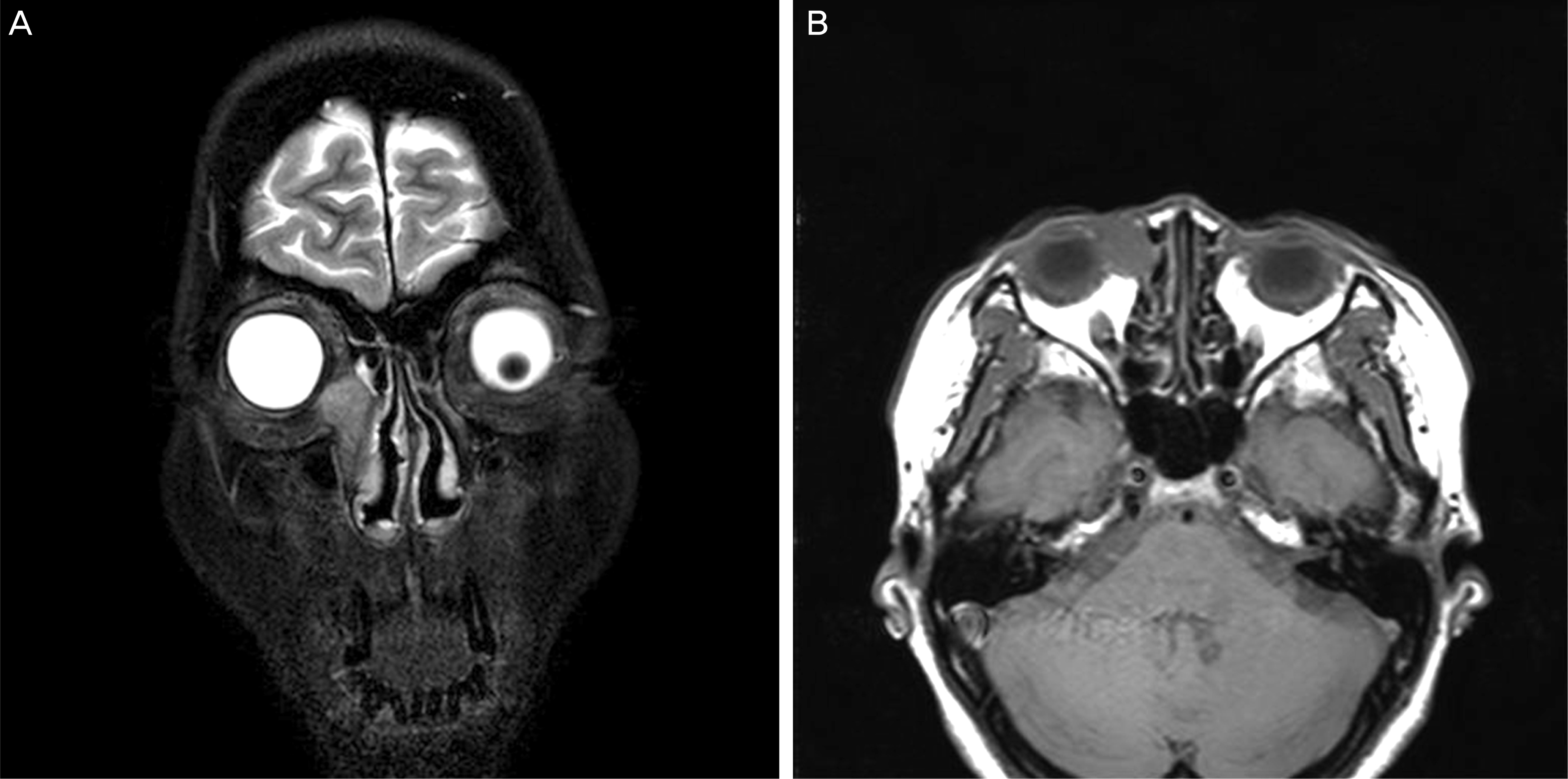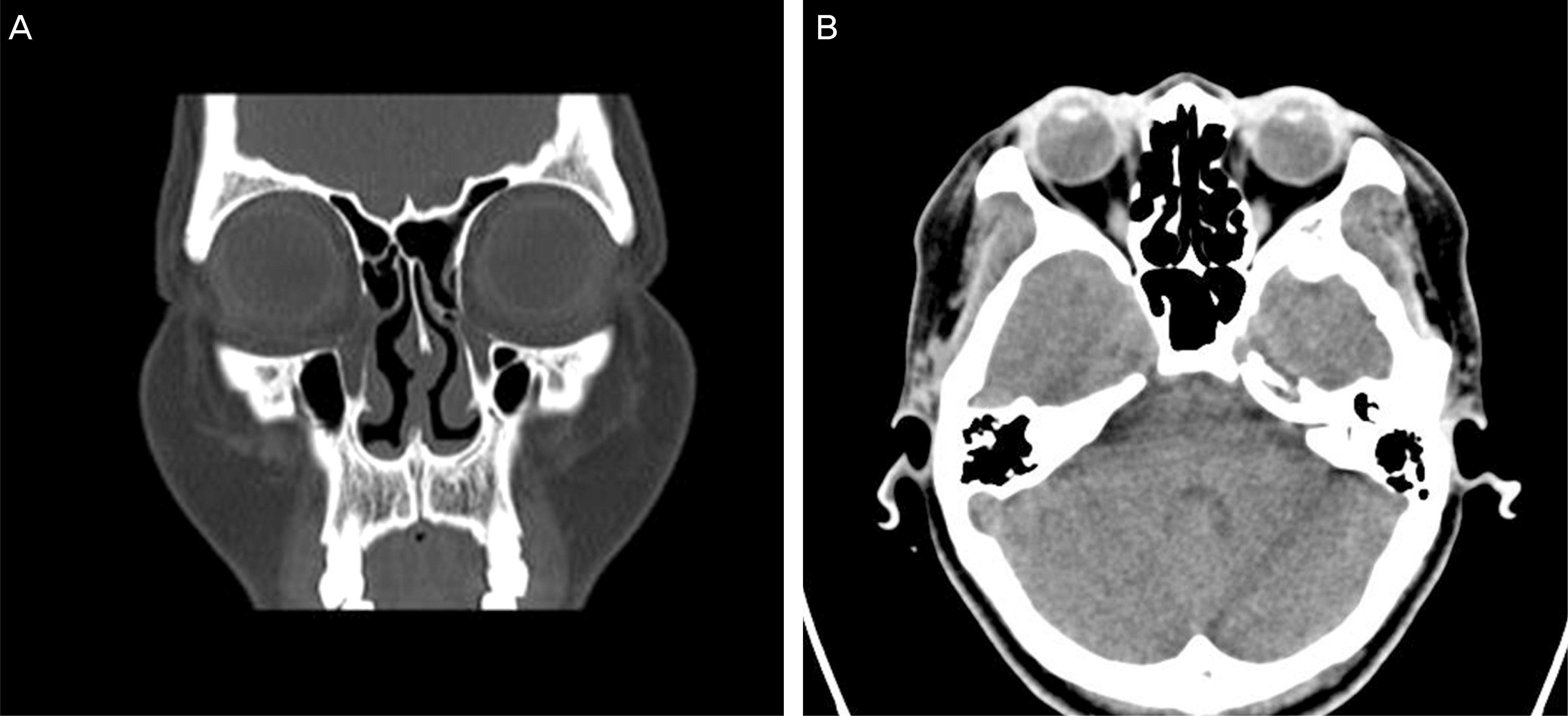초록
Case summary:
A 56-year-old female patient suffering from chronic epiphora for 1 year and having a non-tender, fixed palpable mass in the medial canthus of the eyelid visited the outpatient clinic. Orbital CT showed the non-enhancing mass was located along the right lacrimal sac and nasolacrimal duct and protruded into the nasal cavity. Biopsy was performed at the Otolaryngology Department. Based on histopathological examination, the mass was diagnosed as extramedullary plasmacytoma and the patient was treated with a total dose of 4500 cGy radiation (25 times in 1 month). After the 28-month follow-up period, the mass was not observed on Sinus CT and there was no recurrence. Additionally, no specific lesion was found during nasal endoscopy.
References
1. Iida N, Saito K, Fukushima K. A case of extramedullary plasmacytoma arising from the lacrimal gland: a case report. Eur J Plast Surg. 2005; 28:364–7.

2. Koçak E, Ballerini G, Zouhair A, Özşahin M. Radiation therapy for the solitary plasmacytoma. Turk J Hematol. 2010; 27:57–61.

3. Park HJ, Moon KR, Pae JH, Lee SS. A case of multiple extramedullary plasmacytoma arising from both nasal cavity and nasopharynx. Korean J Otorhinolaryngol-Head Neck Surg. 2009; 52:541–4.

4. Nam KR, Lee Wj, Kim JS. Case report on primary extramedullary plasmacytoma originating in the lacrimal gland. J Korean Ophthalmol Soc. 1998; 39:771–6.
5. Choi JK, Park JS, Park IK. A case of plasmacytoma in the orbit. J Korean Ophthalmol Soc. 2003; 44:2919–23.
6. Duletic-Nacinovic A, Stifter S, Marijic B, et al. Dacryocystitis pro-voked by recurrence of extramedullary plasmacytoma of the orbit: a case report. Tumori. 2010; 96:164–7.

7. Kim HK, Hahm TH, Nam W, et al. Extramedullary plasmacytoma in the maxillary sinus: a case report. J Korean Assoc Oral Maxillofacial Surg. 2010; 36:543–7.

8. Pe'er JJ, Stefanyszyn M, Hidayat AA. Nonepithelial tumors of the lacrimal sac. Am J Ophthalmol. 1994; 118:650–8.
9. Heindl LM, Jünemann AG, Kruse FE, Holbach LM. Tumors of the lacrimal drainage system. Orbit. 2010; 29:298–306.

10. Golden N, Niryana W, Saputra H, Dharmayuda TG. Solitary oss-eous plasmacytoma of the orbit with multiple myeloma. Neurology Asia. 2009; 14:171–4.
Figure 1.
Orbital MRI showing a homogenous mass in the right lacrimal excretory system. (A) Coronal view CT scan. (B) Axial view CT scan.





 PDF
PDF ePub
ePub Citation
Citation Print
Print




 XML Download
XML Download